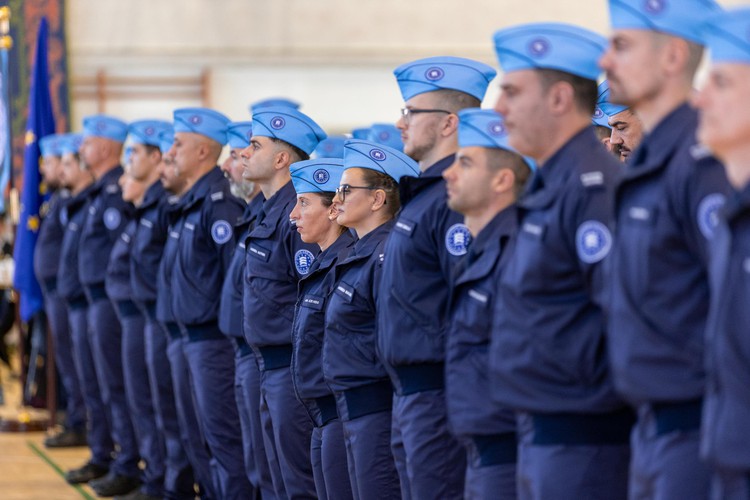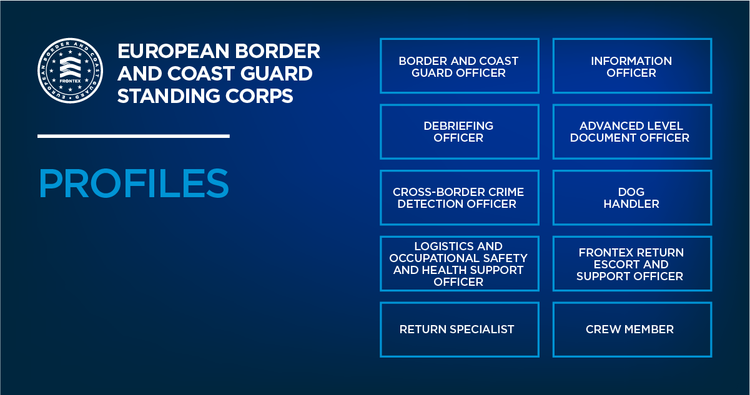For the first time in history, the European Union has its own uniformed service – the European Border and Coast Guard Standing Corps. Trained by the best and equipped with the latest that technology has to offer, Frontex border and coast guards are ready for challenges at the borders, helping to ensure the proper functioning of Europe’s Schengen Area.
This
includes support in migration management and
return activities, helping national authorities in making the
crossing of the border safe and smooth for all travellers, as well as fighting cross-border crime.
Frontex
border guards work under the command of the national authorities of the country
they are deployed in. They can work along the borders of EU Member States and
currently support operations in countries such as Italy, Greece, Spain, and
Bulgaria. They are present at border crossing points and airports, as well as
the Agency’s Warsaw headquarters. They also work in countries outside the EU that
have signed a Status Agreement with the European Commission - Albania,
Montenegro, and Serbia.
The formation of the Standing Corps is a major
achievement of European integration. It also brings about a real transformation
of Frontex – soon, there will be more Frontex staff members working in the field than at its headquarters, constituting a truly operational arm of the EU.
The European Border and Coast Guard Standing Corps helps make the Schengen Area, the largest free travel area in the world, stronger and more resilient.
On a permanent basis, the Standing Corps assists with border checks and provides support to migration management services in the form of nationality screening, registration, and fingerprinting. Its officers help track down illegal drugs, guns, and various forms of illegal activity at EU external borders. Many members of the Standing Corps assist with the return of individuals who are residing in Europe illegally. Standing Corps officers have executive powers to perform border control checks, and may carry a firearm.
The Standing Corps is composed of four categories of officers. These include Frontex personnel and officers who are sent from EU Member States to the Agency on long- or short-term missions, as well as a reserve that can be activated in times of crisis.
In total, by 2027, the European Border and Coast Guard Standing Corps will comprise 10,000 people, among them 3,000 Category 1 officers or simply put, Frontex staff. The other 7,000 officers will be seconded from EU Member States.
Category 1: Border guards directly employed by Frontex as staff members and regularly deployed to border guarding missions according to their professional profile.
Category 2: Long-term staff seconded from EU Member States.
Category 3: Short-term staff seconded from EU Member States.
Category 4: Reserve of EU Member States' border guards available to Frontex for rapid border management crisis situations.
Each Standing Corps Officer receives basic training in order to prepare for deployment in operational
areas. This ensures that Corps officers have the skills necessary to work together
in every given operational area, fully complying with applicable EU laws and ethical standards.
After basic training, Standing Corps Officers undergo various types of specialised training throughout their careers.
Corps officers may specialise in tasks such as
detecting fraudulent documents, assisting with return operations or helping to
spot stolen cars. Other officers may work in the area of gathering information
or collecting data on criminal networks.
Throughout their career, Standing Corps Officers will have the opportunity to acquire new professional profiles in line with their professional experience, but also to perform new tasks, giving them the chance to have the full experience of integrated border management.
The Standing Corps was established by Regulation
(EU) 2019/1896 of 13 November 2019, which covers issues associated with the European Border and Coast
Guard.

